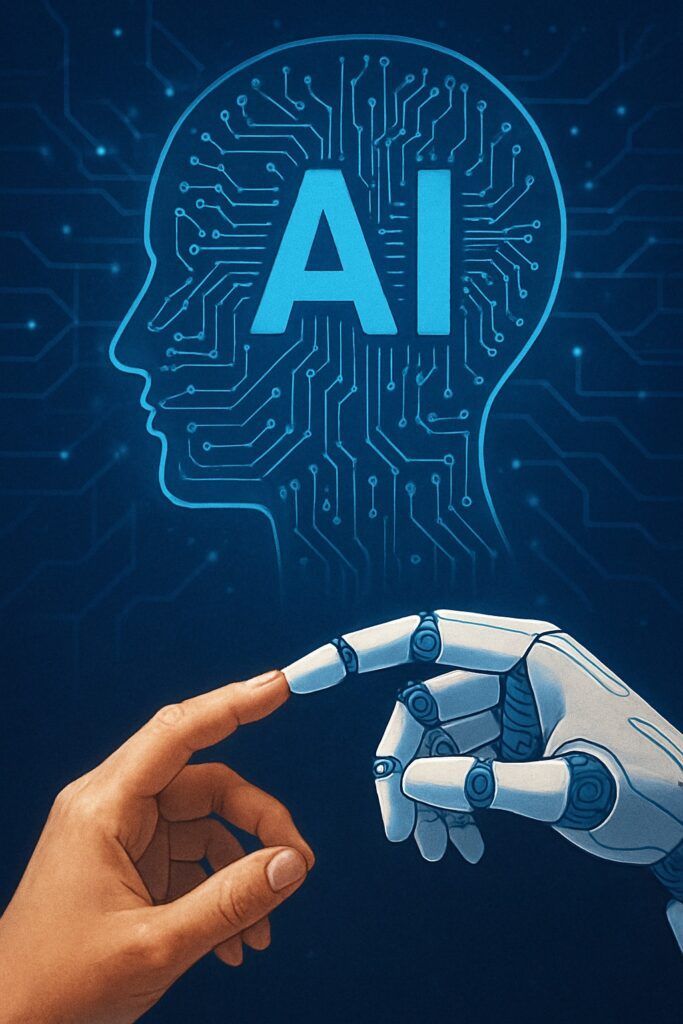Artificial Intelligence (AI) is the science of making machines smart able to perceive, reason, learn, and act. In everyday life, AI helps your phone recognize your voice, filters spam from email, powers navigation apps, and even drafts first-pass reports. If you’ve ever wondered how a computer “figures things out,” this guide breaks it down in plain language.
The Building Blocks: Data, Models, and Learning
Data are examples from the real world text, images, audio, sensor readings. The more relevant and clean the data, the better. Models are mathematical structures that capture patterns in data, like recipe books for making predictions.
Learning is the process of adjusting a model’s internal knobs (parameters) so it performs better over time. There are three big styles of learning: supervised learning, which learns from labeled examples (e.g., emails labeled “spam” vs. “not spam”); unsupervised learning, which finds structure in unlabeled data (e.g., clustering customers by behavior); and reinforcement learning, which learns by trial and error to maximize rewards (e.g., game-playing agents, robotics).
Narrow AI vs. General AI
Narrow AI excels at specific tasks such as translation, face recognition, and route planning, and everything you use today falls here. Artificial General Intelligence (AGI) would match human versatility across tasks. It remains a research ambition—useful to imagine, but not what you deploy in a school, hospital, or business today.
How AI “Thinks” in Practice
To make AI work, data that represents the problem is collected (e.g., thousands of math questions and solutions). The data is prepared by cleaning, balancing, anonymizing, and splitting into training, validation, and test sets. Then a model family is chosen (e.g., decision trees, gradient boosting, neural networks).
The model is trained by exposing it to examples and adjusting parameters to reduce error. It is evaluated on unseen test data to ensure it is not just memorizing. After that, the model is deployed into an app or workflow. Finally, its performance, drifts, and failures are monitored and improved continuously.
The Big Names: ML, Deep Learning, Generative AI
Machine Learning (ML) is the umbrella term for algorithms that learn from data. Deep Learning uses multi-layer neural networks that excel at images, speech, and language. Generative AI (like modern chatbots, image and music models) creates new content based on patterns learned from very large datasets.
Strengths and Limits
The strengths of AI include the ability to scale fast and analyze millions of records or images, find subtle patterns that humans might miss, and automate repetitive tasks, freeing humans for creative and relational work.
The limits include bias, where poor or unrepresentative data leads to unfair outputs; explainability, since some models are “black boxes,” making decisions hard to interpret; hallucinations in large language models that produce fluent but incorrect answers; and fragility, as models degrade when the real world changes (data drift).
Responsible AI 101
Responsible AI involves several principles. Privacy by design means minimizing personal data and anonymizing whenever possible.
Fairness checks ensure performance across groups. Human-in-the-loop ensures that people remain responsible for critical decisions. Security protects models and data from tampering or leakage. Transparency means clearly communicating capabilities and limits to users.
Getting Started (for learners and teams)
To get started, one should learn the basics of Python, statistics, and data handling. Practice can be done on open datasets (Kaggle, UCI ML Repository).
Beginners should start with simple projects like sentiment analysis, sales forecasting, or basic chatbots. The focus should remain on outcomes how the model will improve learning, health, or business.
Conclusion
AI is not magic; it’s pattern-based prediction and generation, powered by data and clever math. Used responsibly, it can amplify human potential helping teachers personalize lessons, doctors triage patients, and entrepreneurs make better decisions. The key is to start small, keep humans in charge, measure impact honestly, and improve continuously.



